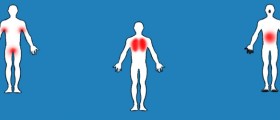
Symptoms of syphilis
In the early stages, syphilis usually doesn’t cause any obvious symptoms on the patient’s body. However, medicine recognizes three different stages for syphilis. In the first stage only the painless red sore can appear on the genitals in the area where the infection occurred. If left untreated the disease progresses to the second stage as the bacteria enters the body and spreads throughout the system. The symptoms of this stage include rash, fever, headache, weight loss, sore throat, muscle aches, enlarged lymph nodes and general malaise. The wart-like patches of skin can also appear on the moist areas around the mouth, anus, and vagina. In the third stage syphilis gets to the latent stage, and the person still remains infected. Sometimes, the symptoms may reoccur including memory loss, loss of bladder control, loss of motor skills and vision, etc.
Causes of syphilis
As already mentioned, syphilis is caused by the bacteria Treponema pallidum. The most common route of transmission is during the sexual intercourse. However, significant number of patients is infected during pregnancy or at birth. The infection occurs when the bacteria penetrate through the small wounds on the skin or the mucus membranes. This happens when the person gets in contact with lesions on an infected person during the sexual intercourse. People between the ages of 15 and 39 are most commonly affected.
Prevention of syphilis
Syphilis is a sexually transmitted disease which means that it can be easily prevented with safe sex practices. Unfortunately, until today, there is no safe vaccine for prevention of syphilis. The proper use of a latex condom can take one’s chances of contracting the infection to the minimum. However, condom use is not sufficient to completely remove any risk of the infection. The only way to absolutely prevent syphilis is to completely restrain from the intimate physical contact with an infected person. It is also important to understand that syphilis cannot be transmitted through normal daily activities, sharing utensils or clothing, sharing the same toilet, etc.
















Your thoughts on this
Loading...